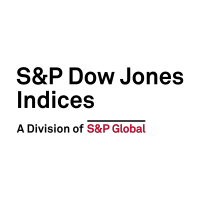Tag Archives: S&P 500 Sectors
Frequent Flyers
Planes are interesting places, airborne aluminum tubes stuffed with strangers from all walks of life, including seatmates prodding with the proverbial ice-breaker, “So, what do you do?” Overhearing many such conversations, I’ve found complicated job descriptions elicit blank stares and subsequently lead to higher-level answers such as “Well, I’m in tech,” or “I work in…
- Categories Equities
- Other Tags
- Categories
- Equities
- Other Tags
Using the News to Select a More Stable Path to the S&P 500
Meet the S&P 500 RavenPack AI Index, a multi-asset index that applies a news analytics algorithm powered by RavenPack to select S&P 500 sectors with the strongest news sentiment for use in its sector rotation process. The index combines U.S. equities and fixed income, complemented by a daily risk control mechanism that seeks to maintain…
- Categories Multi-Asset
- Other Tags
Happy Days for How Long?
With less than a month left to go to close out the year, it’s a good time to reflect on the highs and lows that market participants have experienced. While the year began with a rocky start due to the Silicon Valley Bank collapse, the market continued to power forward, stumbling in Q3 as 10-year…
- Categories Equities, Fixed Income, S&P 500 & DJIA
- Other Tags
Disentangling Diversification
We frequently hear that “it’s a stock picker’s market.” The recent market environment could equally well be characterized as a sector picker’s market. To measure the importance of sectors, we decompose total market dispersion into within-sector and cross-sector effects. Exhibit 1 shows that the contribution of cross-sector effects to total S&P 500® dispersion has trended…
- Categories Equities, S&P 500 & DJIA
- Other Tags
- Categories
- Equities, S&P 500 & DJIA
- Other Tags
Examining Tactical Approaches to Sectors
Why does sector dispersion matter and how can it inform tactical approaches to sectors? S&P DJI’s Elizabeth Bebb and Invesco’s András Vig explore how sector dispersion can impact long-term asset allocations.
- Categories Equities
- Other Tags
These Go to 11: Diversification with S&P 500 Sectors
Many strategies (including passive ones) hold large allocations to Information Technology. A “barbell” approach can mitigate risk from high exposure to one sector by pairing it with another. Do you remember sending your first email? For many, it was likely around the mid-1990s when a “googol” was still 10^100 rather than a verb and the…
- Categories S&P 500 & DJIA
- Other Tags
Sizing Sectors
After peaks in S&P 500® concentration, the S&P 500 Equal Weight Index has tended to outperform, suggesting that there is a relationship between changes in concentration and the relative performance of equal weighting. But, does this relationship also occur at the sector level? Using the historical adjusted HHI (Herfindahl-Hirschman Index), we’ve previously established that concentration…
- Categories Equities
-
Other Tags
2022, Anu Ganti, concentration, equal weight, Equal Weight Sectors, HHI, IIS, Index Investment Strategy, institutional investor, S&P 500 Energy, S&P 500 Equal Weight, S&P 500 Industrials, S&P 500 Information Technology, S&P 500 Materials, sector, sector concentration, sectors, U.S. Equities, U.S. sectors
- Categories
- Equities
- Other Tags
- 2022, Anu Ganti, concentration, equal weight, Equal Weight Sectors, HHI, IIS, Index Investment Strategy, institutional investor, S&P 500 Energy, S&P 500 Equal Weight, S&P 500 Industrials, S&P 500 Information Technology, S&P 500 Materials, sector, sector concentration, sectors, U.S. Equities, U.S. sectors
Contemplating Concentration
After the exceptional performance of large-cap stocks in recent years, concentration concerns naturally come to mind. There are many ways to measure concentration. A simple method is to add up the weight of the top names, but the drawback with this approach is it doesn’t incorporate all the constituents in an index. The Herfindahl-Hirschman Index…
- Categories S&P 500 & DJIA
- Other Tags
No Easy Answer: Sector and Factor Responses to U.S. Rate Hikes
Although higher rates are generally seen as negative for risk assets, the initial stages of a monetary tightening cycle have not been disastrous for the U.S. stock market historically. However, while the overall market may muddle through just fine, the same may not be true for the different sectors and factors that compose a broad…
- Categories Factors, S&P 500 & DJIA
- Other Tags
The Market Is Up, But So Is Volatility
So far, 2020 has brought us a global pandemic, a coordinated global economic shutdown, and, in the U.S., a notably contentious election. So it’s no surprise that volatility has been, and remains, elevated. Despite all this, equities have fared reasonably (some would say surprisingly) well, with the S&P 500® climbing 13% through Nov. 19 since…













































